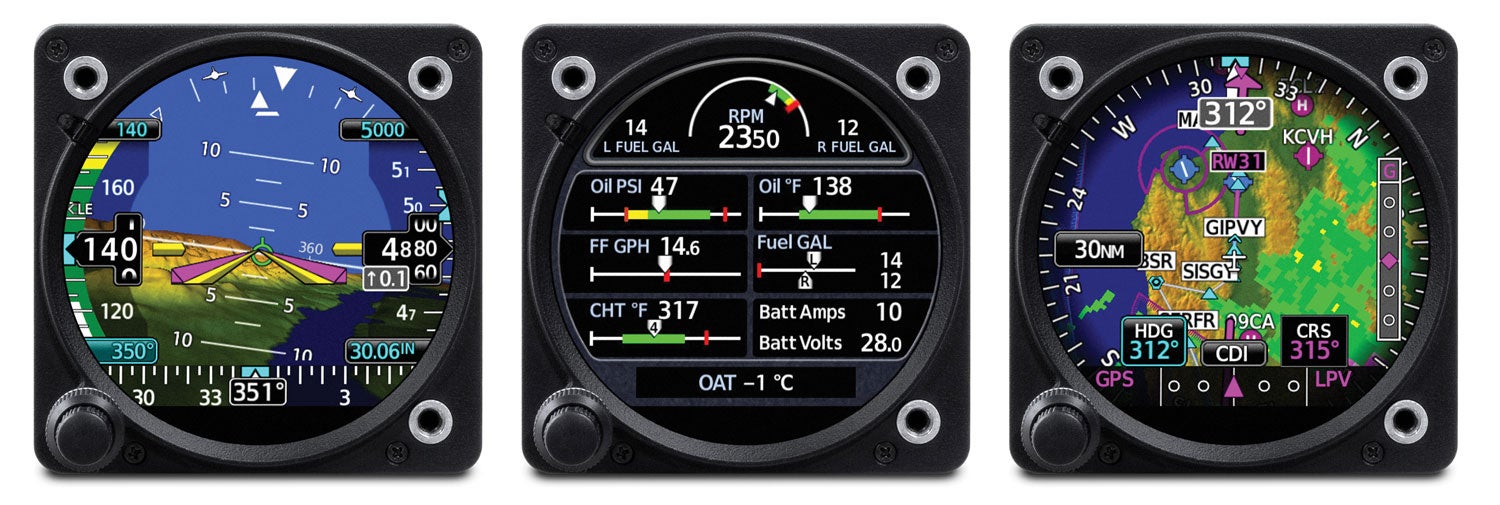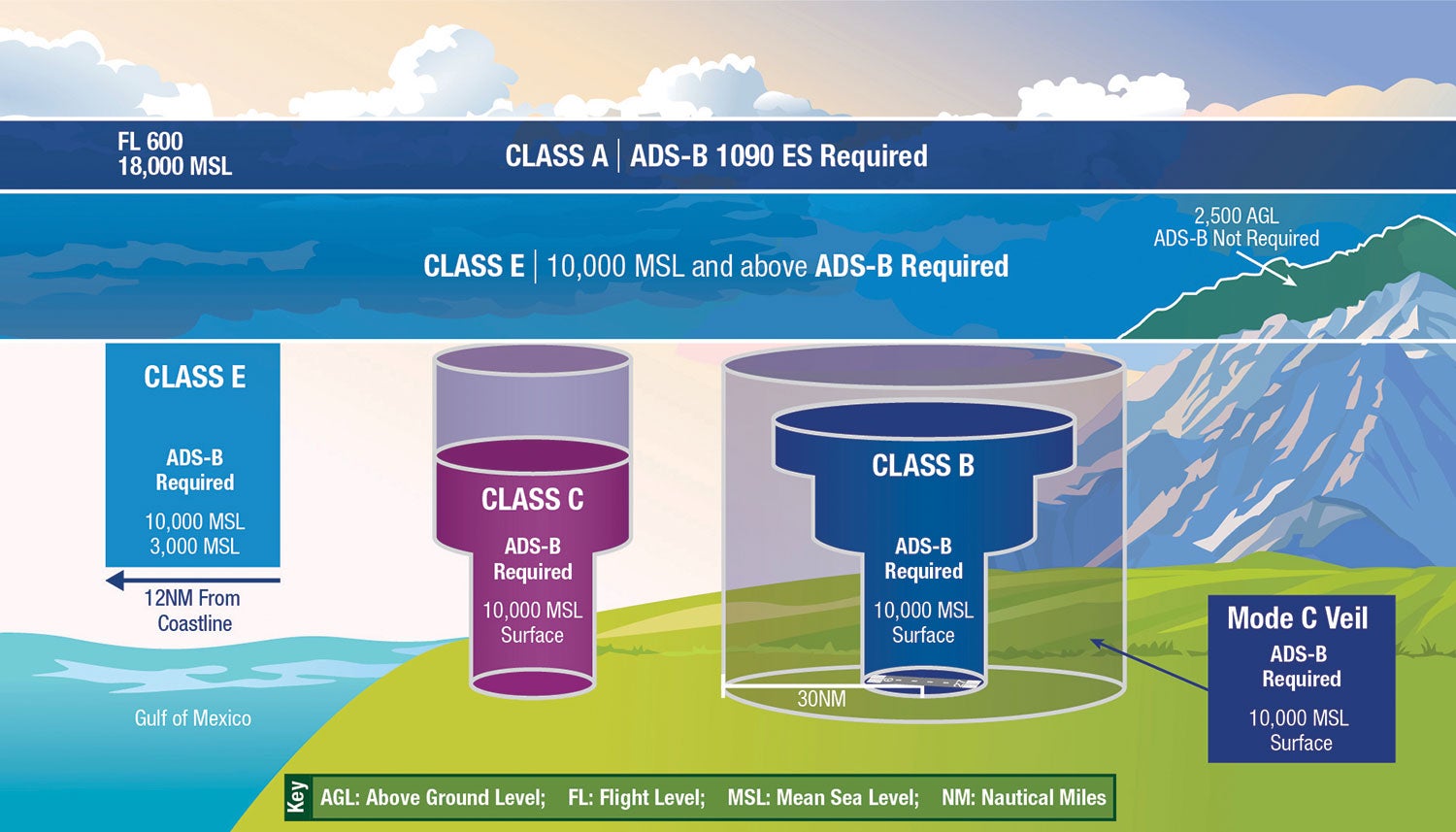Just as we wrapped up our big-screen EFIS buyer’s guide in this issue, Garmin released its new GI 275. I’d heard rumors that Garmin, among other manufacturers, was ready to make some waves in the small-scale EFIS field, which is partly why we decided to break out the smaller devices for another issue. And it’s likely this is just the first shot, to follow the successful Garmin G5 and the uAvionix (formerly AeroVonics) AV-20 and AV-30. Of course, Dynon, Grand Rapids and MGL all have had small-format EFIS units available for some time.

So where does Garmin’s GI 275 take us? Let’s get one point out of the way right now: Being certified, the GI 275, in any of its permutations, is expensive by the standards we’re used to. The most basic version, which is hard configured as a primary attitude indicator, is $3995. That includes an internal attitude and pitot-static sensor set but not the optional backup battery. With internal nav interfaces so it’ll act as an HSI, the GI 275 costs $4295. There’s a version meant to be used as a multifunction/map display and one that will be your primary nav display. Finally, there’s a fully self-contained engine monitoring version that starts at $5295. If that sounds saucy, remember that it has to replace all the certified instruments—great news if you have a set of creaky old gauges in your Skyhawk or Cherokee, but not cheap.
Something else to consider. The GI 275 is designed to reside in a 31/8-inch instrument hole, mounted from the back. For the vast majority of homebuilts, even as retrofits, the issue of whether a replacement instrument goes in from the front or the back is typically not a huge deal. I have seen a few, but not many, Experimental/Amateur-Built aircraft whose panels have some kind of overlay, which, in turn, would make rear mounting a small EFIS hugely desirable. But overlays are incredibly common among the Cessnas and Pipers that Garmin is targeting. For an avionics installer to not have to cut into 40-year-old Royalite is worth the weight of a recommendation right there, and that for owners of certified aircraft, installation costs are significant.
Garmin has also brought a touchscreen to the small EFIS. I can’t wait to try one of these in the real world, but it’ll be interesting to see how well a touchscreen will work with my set of 10 thumbs. (The GI 275 also has a set of concentric knobs.) As I read the pilot’s manual, it seems many of the day-to-day functions will be managed through the touch interface. A 3-inch instrument doesn’t provide a lot of screen area to play with, so I suspect Garmin had to work hard on the interface.
While I would guess that the GI 275 as currently offered won’t make a huge splash in the Experimental world, I do think we’re seeing some features now that will arrive for our birds. For sure, any G5 replacement—for retrofit primary display or as a backup to a larger EFIS—will have a touchscreen. I also would not be surprised to see an Experimental-only version of the engine monitor made available. Right now, Garmin cedes the retrofit market to others, and that’s just not Garmin’s style.
ADS-B, Still!
Now that it’s “real” the ADS-B mandate seems to be causing as much confusion and consternation as ever. Here’s where you can’t fly until equipped: All Class A and C airspace, most Class B and some Class E. Clear as mud?
So the exceptions. You need it in Class E airspace at and above 10,000 feet MSL, excepting above 10,000 feet as long as you’re within 2500 feet of the ground. ADS-B Out is required in Class E airspace over the Gulf of Mexico within 12 nautical miles of the coast but at and above 3000 feet MSL. Oh, and the equipment requirements change in Class A airspace to require a 1090ES transponder; the 978 UAT solutions won’t cut it. To quote Ed Harris’ depiction of Gene Kranz in Apollo 13, “Tell me this isn’t a government operation.”

Okay, so you can’t fly in Class C without ADS-B, nor can you fly over the top; the rule prevents you from transiting overhead the airspace between the ceiling of Class C and the base of the over-arching ADS-B-mandated Class E airspace. You can fly beneath any overhanging segments as long as you’re clear of Class C.
ADS-B and Class B airspace gets a bit trickier. The rule says no inside or above Class B but the functional amount of airspace off limits to non-ADS-B aircraft is greater because the rule also specifies that you need ADS-B to fly within the Mode C veil, which, of course, surrounds all domestic Class B airspace. The veil is often quite a bit larger than the associated Class B airspace, but there are numerous exceptions. Los Angeles, San Diego, San Francisco, Phoenix, Dallas-Ft. Worth, Houston, Cleveland, Detroit and Denver come to mind. In some cases, the amount that Class B extends beyond the veil is very small, in others it’s a few miles. The rule says you can’t fly in or over any of that airspace, but it says nothing about flying under it. Assuming you’re clear of the veil, you can underfly that Class B airspace without ADS-B. Phew!
For those still not equipped, there’s an out if you need to fly into the ADS-B airspace. It’s called ADAPT—ADS-B Deviation Authorization Preflight Tool. This is an online-only tool where you provide the FAA with your flight info, and you’ll be informed, nearly immediately, if you’ve been granted a waiver to fly through affected airspace without ADS-B. Even so, this is meant as a solution to get you to a location where you can install or repair the ADS-B gear, not as a routine procedure to circumvent the requirement. Supposedly, the FAA is paying attention.














The US went for a non-compatible ADS-B with the 978 system, when the world standard is 1090.
The world went with satellite; the US ground based system for 978 has holes.
If installing ADS-B, go for a system that has the 1090 version; you will need it to fly anywhere other than the US.